Abstract
Molecular orbital calculations are carried out on a number of carotenoids in the presence of an external charge and a constant electric field. The external charge is used to represent the strong permanent field that is believed to polarize carotenoids in photosynthetic membranes and thus to account for their linear response to the transmembrane potential. Our calculations show that the in vitro leads to in vivo spectral shifts of carotenoids (approximately 25 nm) can be produced by a charge in close proximity to the molecule. The interaction of the induced dipole moment with a constant field accounts for the observed magnitude of the electrochromic response in photosynthetic bacteria. The existence of a second pool of carotenoids that shows a significant (approximately 20 nm) wavelength shift but no electrochromic response can be explained by an external charge positioned near the center of the molecule that affects its absorption maximum while inducing essentially no dipole moment. The spectral shift for this pool is due to the induction of higher multipoles. These also account for discrepancies that arise when one attempts to account quantitatively for available experimental results on carotenoid band shifts in terms of classical electrochromic theory.
Full text
PDF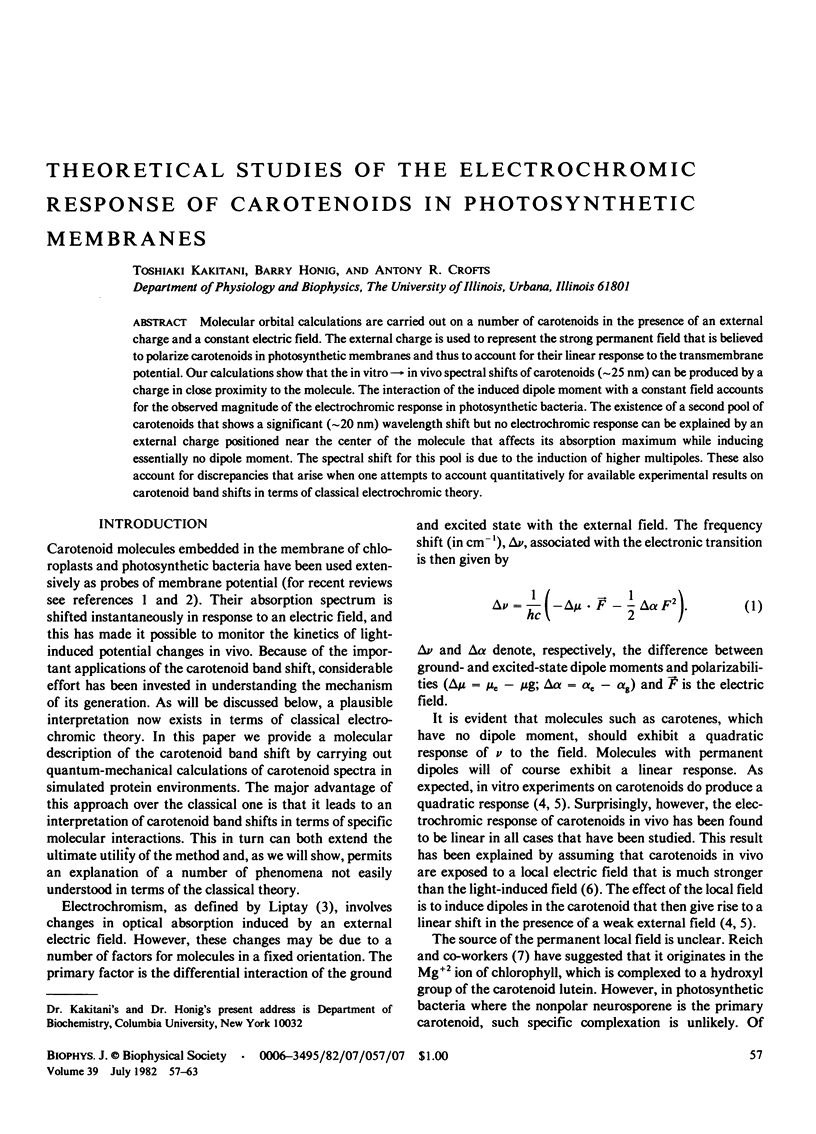
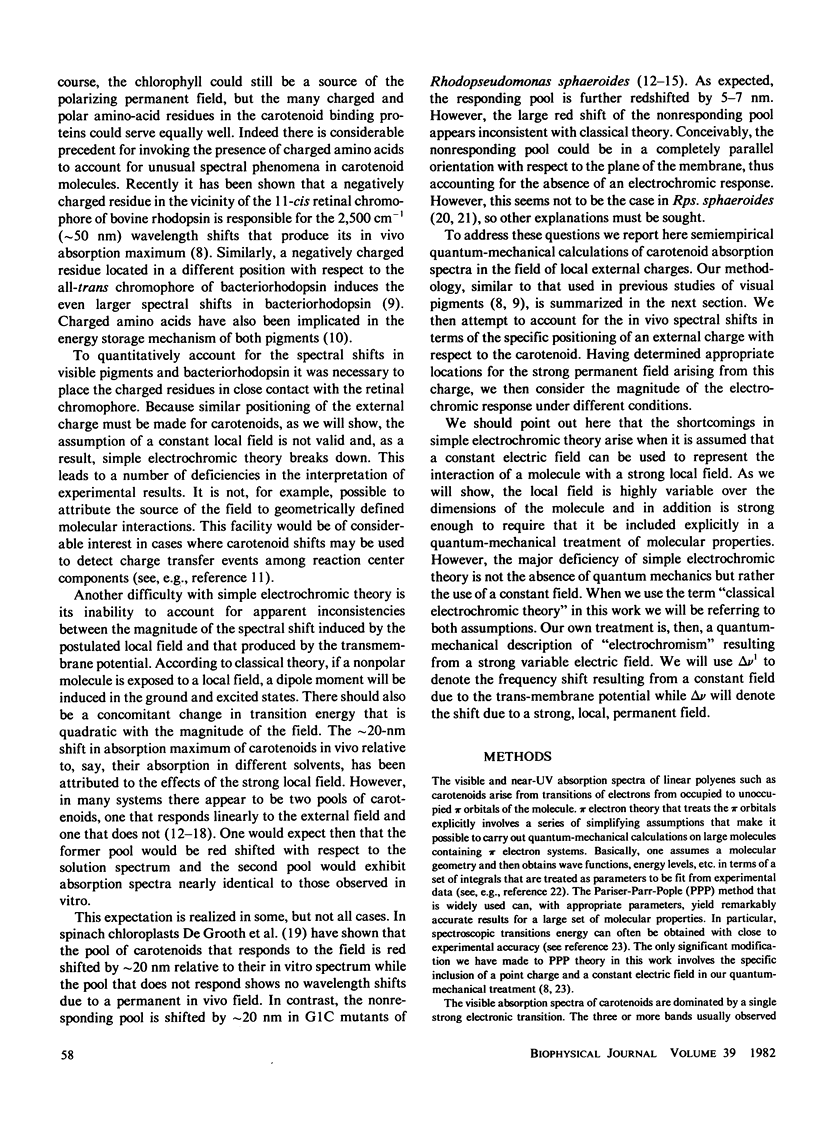
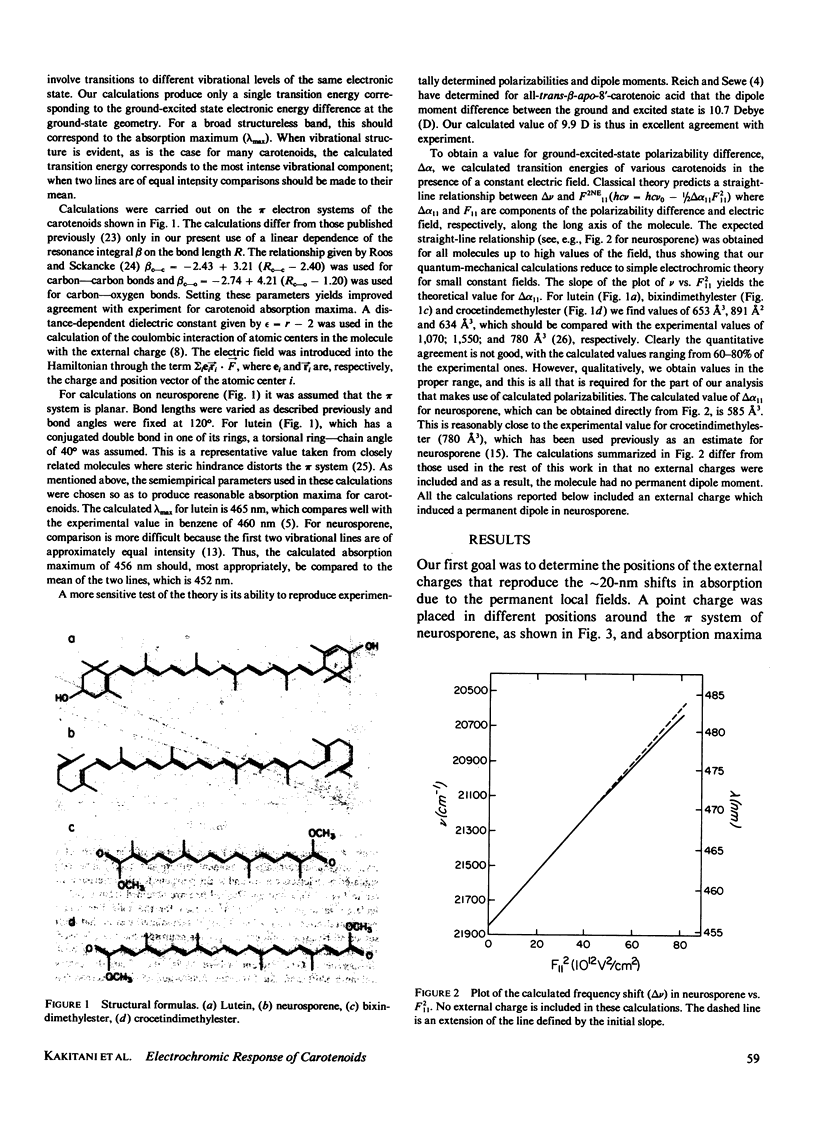
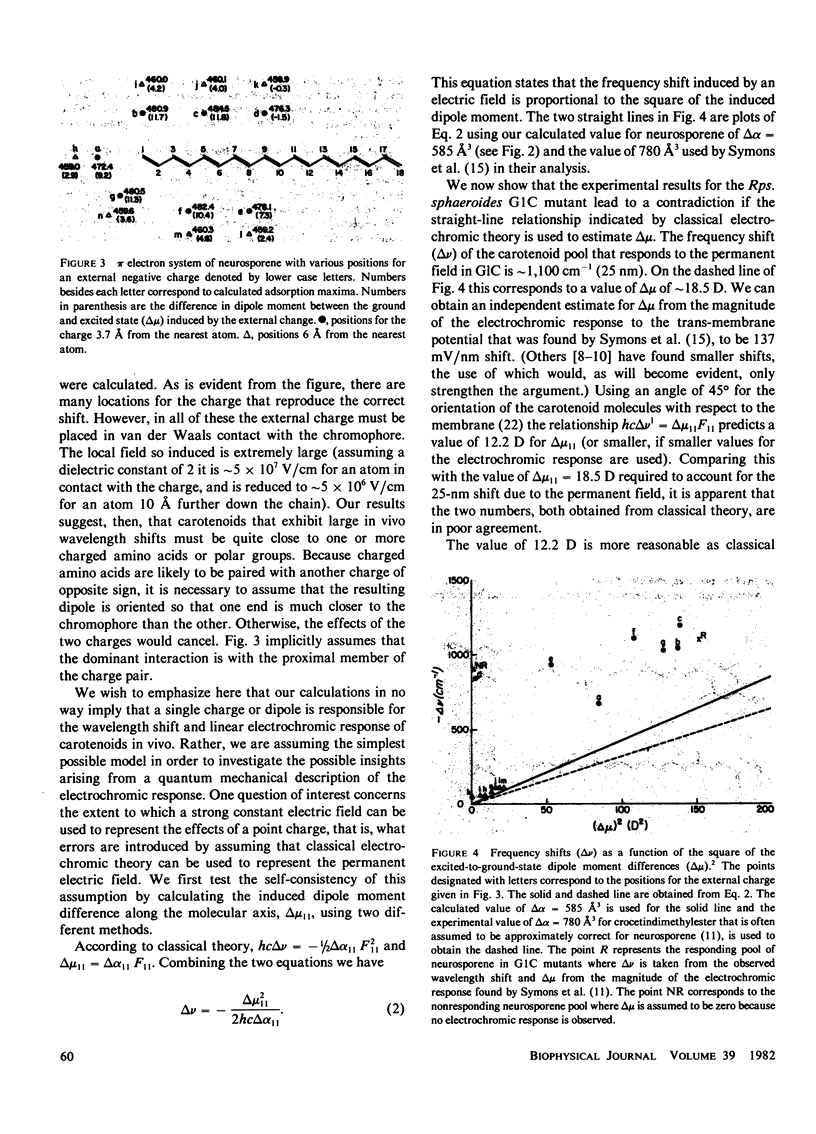
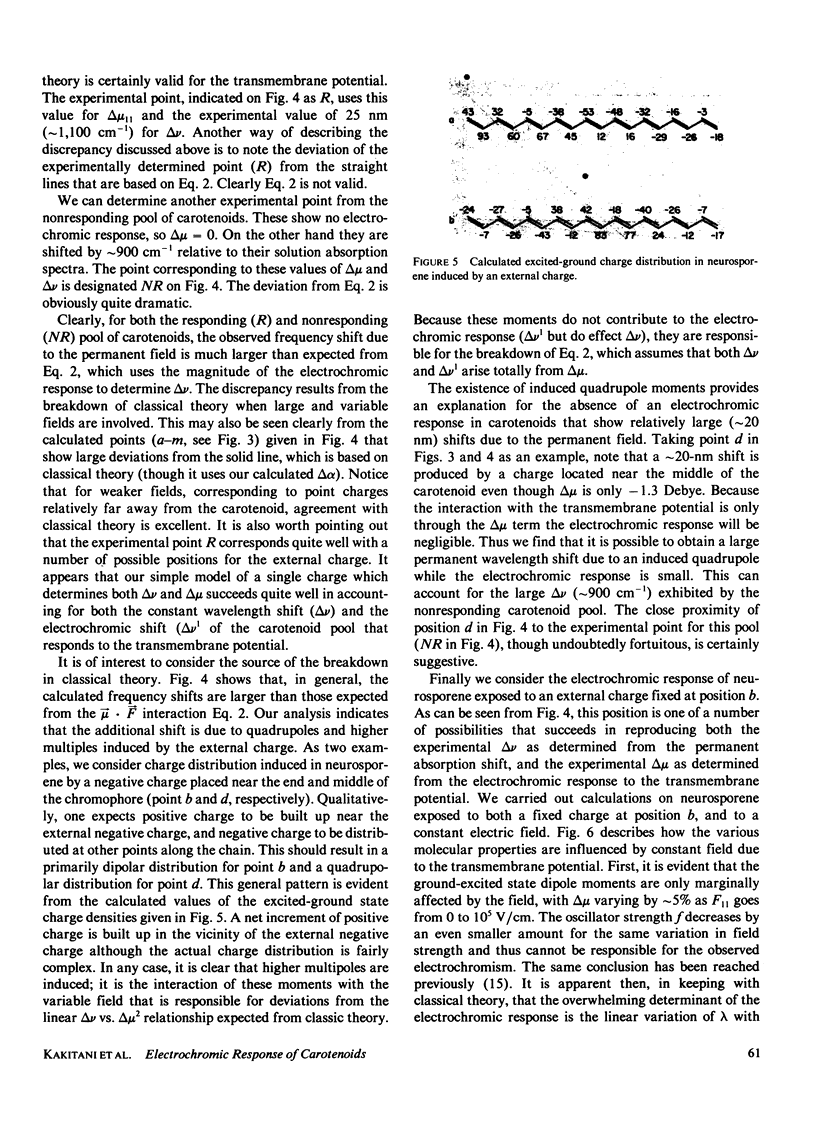
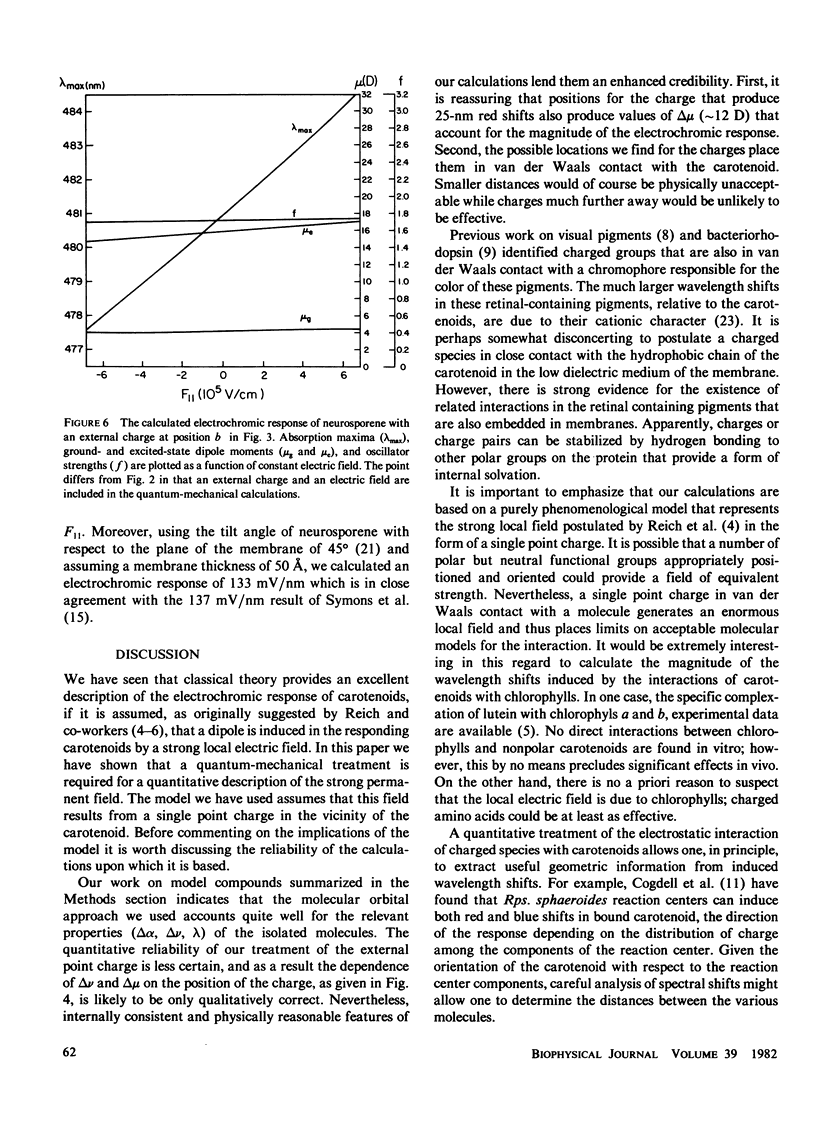
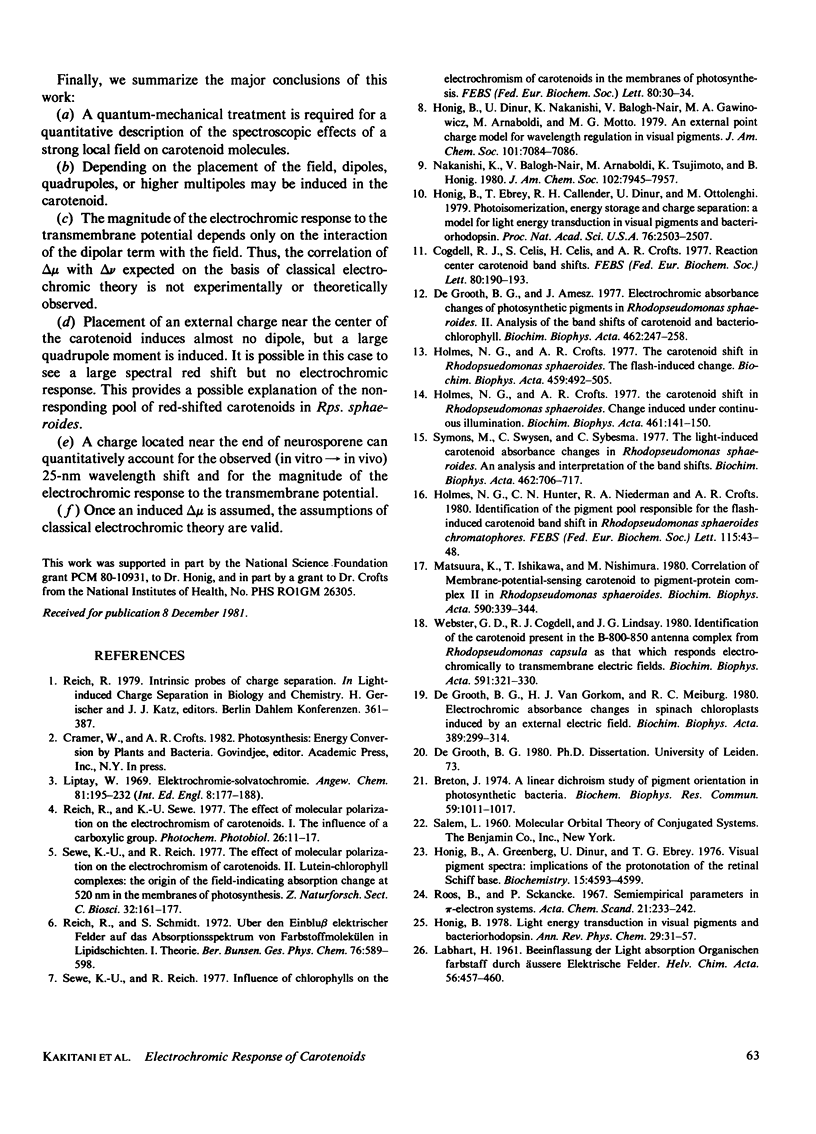
Selected References
These references are in PubMed. This may not be the complete list of references from this article.
- Breton J. The state of chlorophyll and carotenoid in vivo. II. A linear dichroism study of pigment orientation in photosynthetic bacteria. Biochem Biophys Res Commun. 1974 Aug 5;59(3):1011–1017. doi: 10.1016/s0006-291x(74)80080-x. [DOI] [PubMed] [Google Scholar]
- Cogdell R. J., Celis S., Celis H., Crofts A. R. Reaction centre carotenoid band shifts. FEBS Lett. 1977 Aug 1;80(1):190–194. doi: 10.1016/0014-5793(77)80437-7. [DOI] [PubMed] [Google Scholar]
- Holmes N. G., Crofts A. R. The carotenoid shift in Rhodopseudomonas sphaeroides. Change induced under continuous illumination. Biochim Biophys Acta. 1977 Jul 7;461(1):141–150. doi: 10.1016/0005-2728(77)90076-7. [DOI] [PubMed] [Google Scholar]
- Holmes N. G., Crofts A. R. The carotenoid shift in Rhodopseudomonas sphaeroides. The flash induced change. Biochim Biophys Acta. 1977 Mar 11;459(3):492–505. doi: 10.1016/0005-2728(77)90048-2. [DOI] [PubMed] [Google Scholar]
- Honig B., Ebrey T., Callender R. H., Dinur U., Ottolenghi M. Photoisomerization, energy storage, and charge separation: a model for light energy transduction in visual pigments and bacteriorhodopsin. Proc Natl Acad Sci U S A. 1979 Jun;76(6):2503–2507. doi: 10.1073/pnas.76.6.2503. [DOI] [PMC free article] [PubMed] [Google Scholar]
- Honig B., Greenberg A. D., Dinur U., Ebrey T. G. Visual-pigment spectra: implications of the protonation of the retinal Schiff base. Biochemistry. 1976 Oct 19;15(21):4593–4599. doi: 10.1021/bi00666a008. [DOI] [PubMed] [Google Scholar]
- Matsuura K., Ishikawa T., Nishimura M. Correlation of membrane-potential-sensing carotenoid to pigment-protein complex II in Rhodopseudomonas sphaeroides. Biochim Biophys Acta. 1980 May 9;590(3):339–344. doi: 10.1016/0005-2728(80)90204-2. [DOI] [PubMed] [Google Scholar]
- Sewe K. U., Reich R. Influence of the chlorophylls on the electrochromism of carotenoids in the membranes of photosynthesis. FEBS Lett. 1977 Aug 1;80(1):30–34. doi: 10.1016/0014-5793(77)80400-6. [DOI] [PubMed] [Google Scholar]
- Symons M., Swysen C., Sybesma C. The light-induced carotenoid absorbance changes in Rhodopseudomonas sphaeroides: an analysis and interpretation of the band shifts. Biochim Biophys Acta. 1977 Dec 23;462(3):706–717. doi: 10.1016/0005-2728(77)90112-8. [DOI] [PubMed] [Google Scholar]
- Webster G. D., Cogdell R. J., Lindsay J. G. Identification of the carotenoid present in the B-800-850 antenna complex from Rhodopseudomonas capsulata as that which responds electrochromically to transmembrane electric fields. Biochim Biophys Acta. 1980 Jul 8;591(2):321–330. doi: 10.1016/0005-2728(80)90163-2. [DOI] [PubMed] [Google Scholar]
- de Grooth B. G., Amesz J. Electrochromic absorbance changes of photosynthetic pigments in Rhodopseudomonas sphaeroides. II. Analysis of the band shifts of carotenoid and bacteriochlorophyll. Biochim Biophys Acta. 1977 Nov 17;462(2):247–258. doi: 10.1016/0005-2728(77)90123-2. [DOI] [PubMed] [Google Scholar]
- de Grooth B. G., van Gorkom H. J., Meiburg R. F. Electrochromic absorbance changes in spinach chloroplasts induced by an external electrical field. Biochim Biophys Acta. 1980 Feb 8;589(2):299–314. doi: 10.1016/0005-2728(80)90046-8. [DOI] [PubMed] [Google Scholar]


